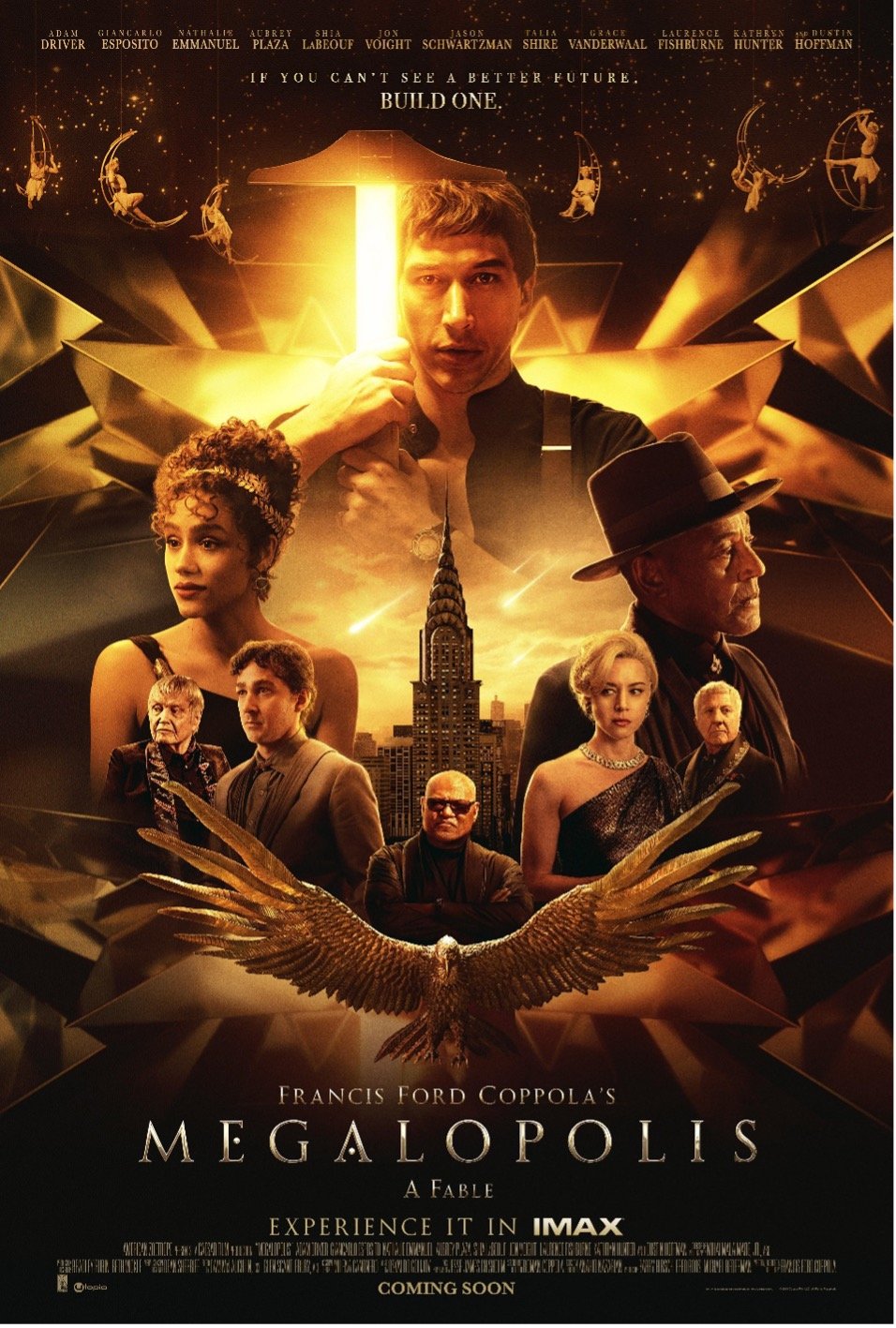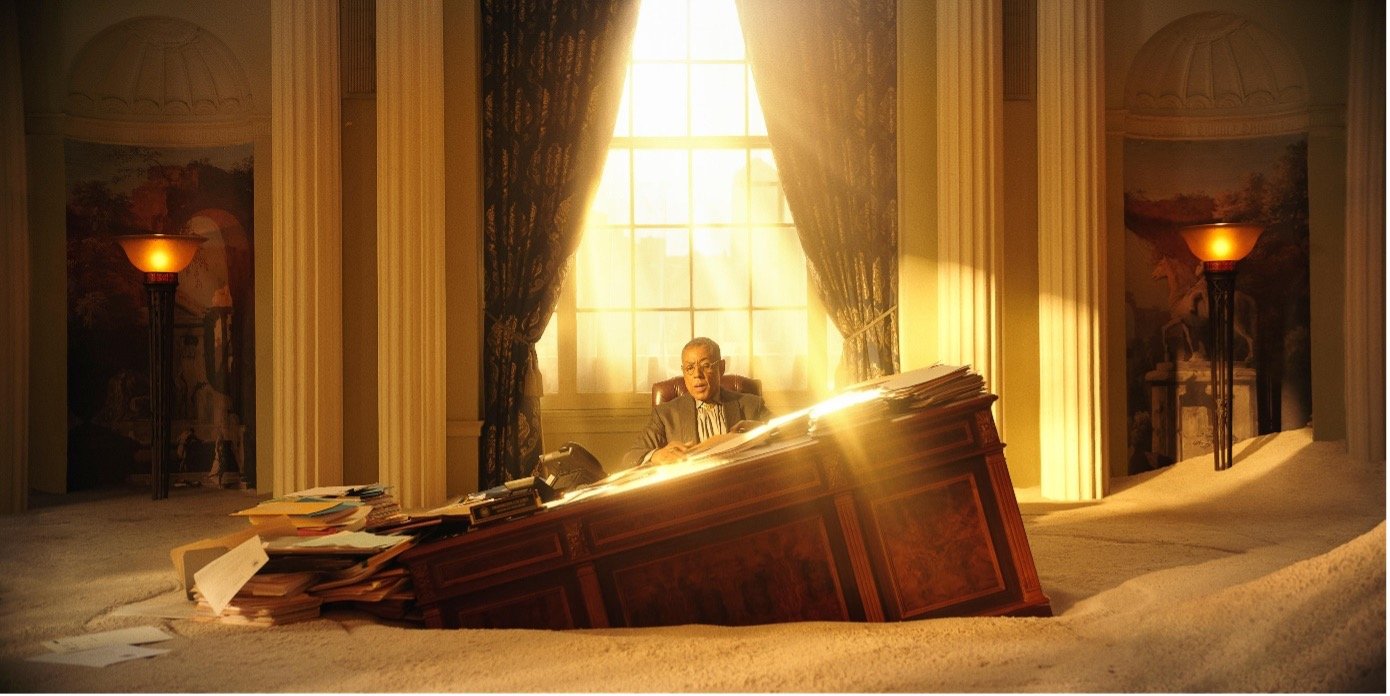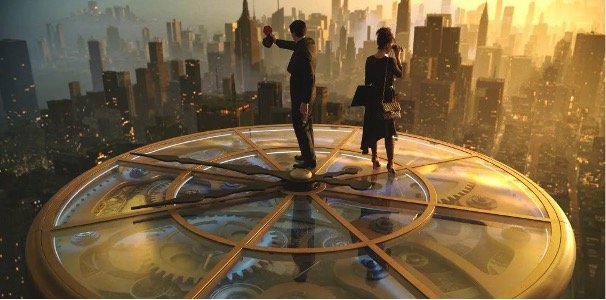
MEGALOPOLIS, A POSTMODERN MASTERPIECE BY FRANCIS FORD COPPOLA
Cinema Writer/Film Critic Efe TEKSOY; wrote the tragedy, sci-fi, and drama film “MEGALOPOLIS”, for America’s Los Angeles-based Internet Newspaper @alaturkanews.

AN EPIC TALE OF POPULISM ON POLITICS
Megalopolis, which was selected to compete for the Palme d’Or at the 77th Cannes Film Festival, where it premiered on May 16, 2024, bears the signature of master director Francis Ford Coppola, who is considered one of the greatest filmmakers in the history of cinema. Megalopolis, a film whose production took 40 years, was released. Visionary director Coppola; By presenting the audience with an epic tale about populism in political science, it drags the audience through the past and the future and takes them on a postmodern journey. Coppola describes his film as “A Roman epic set in an imagined modern America” and draws parallels between the fall of Rome and the future of the United States, presenting a film that sets the events of the Catiline conspiracy of 63 BC in modern New York. Megalopolis, whose script has been compared to Fritz Lang’s classic film Metropolis (1927), of which Francis Ford Coppola, who grew up in New York, was a fan, as well as Ayn Rand’s novel The Fountainhead, The Fountain of Life. It leaves the audience alone with philosophical issues such as “The Search for the Nature of Reality” and “The Problem of Existence”. Thus, we encounter a near future of the “Bio-Technological Brave New World” type that destroys the basic assumptions of our understanding of reality due to the techno-scientific progress of our age. This brings us to French philosopher Jean Paul Sartre’s work titled Being and Nothingness, subtitled Phenomenological Ontology Essay. Being and Nothingness, which is also seen as a philosophical anthropology, is a philosophical essay on ontology in which detailed phenomenological descriptions of the concepts that form the basis of philosophy are made and the understanding of absolute freedom is defended. We see the understanding of freedom discussed here through the character of Cesar Catilina in the movie.

TOPIC OF THE FILM
Cesar Catalina, a genius architect, aims to rebuild the decaying New Rome (old New York) as a utopia after a devastating disaster. He is given a license by the federal government to demolish the city and rebuild it as a sustainable utopia using Megalon, a material that can give him the power to control space and time. Mayor Franklyn Cicero, idealist artist Cesar’s greatest enemy, remains committed to a reactionary status quo. Caught between them is Julia Cicero, whose loyalties are split between her father and her lover.
Stars; Adam Driver, Giancarlo Esposito, Dustin Hoffman, Nathalie Emmanuel, Aubrey Plaza, Shia LaBeouf and Laurence Fishburne.

ARCHITECTURAL SEMIOLICS
Architectural signs and geometric codes that stand out in the visual atmosphere of the film are of particular importance. Italian philosopher, writer, medievalist and semiotician Umberto Eco, in his book Architectural Semiotics, introduces many innovations in the definition of functions, based on the conceptual structure of architectural signs being linked to functions. Eco says, “The architect examines whether the new technological elements introduced by the buildings he builds will force that primitive community to reconsider the traditional functions they used before.” Caught up in an avant-gardist impulse of destruction, the architect decides to force people to live in a completely different way. In the film, Cesar Catilina, who virtually recreates the old New York, that is, the New Roman city (at the level of Jean Baudrillard’s Simulacra and Simulation) and takes the audience on a journey through this reality, appears before us as an imaginary architect. But this new Rome he created does not break the patterns of New York City and remains faithful to the city’s architectural codes. Eco states that architecture has a tendency to transform rhetorical and ideological expectations and produce new knowledge, and in order for this tendency to be realized, architecture must preserve some of its existing codes.

ARCHITECTURAL PASSWORD
Italian architect Italo Gamberini proposes a “Code of Constitutive Indicators” for architecture. The patterns used for the interior in this proposal (such as indicators that determine the base, associative indicators and indicators that limit the exterior) are the essential patterns of architecture. Umberto Eco adds that “if such encryption is applied concretely (for many different structures), the possibilities it will offer will undoubtedly enable one to overcome the typological-rhetorical rigidity and frozenness of the previous code.” Also Eco; If architecture is the art of articulating spaces with each other, then the coding of this articulation could be as Euclid predicted in his geometry. At this point, he says that the elements of the first articulation will be space units – or chorems (space) – and the elements of the next articulation will be stoichea, that is, elements of classical geometry. Just like the idealist architect Cesar Catilina, who built a postmodern New Rome in the old New York while preserving the existing architectural codes in the movie.

OBJECT-ORIENTED ONTOLOGY
In this architectural futuristic journey that the character embarks on, we are greeted by a utopian world where the past and the future are intertwined. Well; The character is dragged into the middle of a world of independent objects. This situation brings the viewer to the philosophy of Object-Oriented Ontology (O.O.O.) in Metaphysics, one of the greatest schools of thought of the 21st Century. This philosophical investigation was influenced by Martin Heidegger, who is considered one of the most influential and important philosophers of the 20th Century due to his significant contributions to the philosophy of Phenomenology, Hermeneutics and Existentialism; It suggests the autonomy of objects, their irreducibility to each other and to human consciousness, and that they enter into relationship with their own realities, independent of human consciousness. We also encounter this philosophical view in Immanuel Kant, who is known as one of the founding fathers of German philosophy and one of the greatest philosophers in the history of world philosophy. In Kant’s distinction between the “Considerable and Sensible World” and his view of the Noumenon associated with the Thing-in-itself. In this posthumanist worldview, objects have the capacity to relate and even act without humans. American philosopher Graham Harman, one of the pioneers of the Speculative Realism Movement in contemporary philosophy, states in his book Object-Oriented Ontology: “While real objects exist regardless of whether we perceive or think about them, emotional objects exist only in relation to our conscious activities.” he states.

NEW ROME CITY
In the movie, we see that chaos dominates the New Roman City and this chaoticness replaces reality. The basic thesis of Georg Wilhelm Friedrich Hegel, one of the founding figures of the philosophical movement known as German Idealism; “What is rational is what is real, what is real is rational”. In other words, the basic idea of reality theory is that the subject is connected to the object and one cannot exist without the other. According to Hegel, the rational, that is, the rational, is reality. However, the Dark Matter universe presents us with reality as almost irrational. In this process, it brings the audience to the last great metaphysical system formed by the Danish philosopher Søren Kierkegaard, the father of the philosophy of Existence, who greatly admired Hegel’s philosophy but later waged a cultural war on it. According to the dialectical law of the pure Hegelian style, the thesis encounters its antithesis, which is the antithesis in Kierkegaard’s philosophy.

MEGALOPOLIS
Megalopolis, Francis Ford Coppola’s last masterpiece It offers a futuristic epic blended with science fiction, making references to dozens of subjects from mythology to history and philosophy.
Definitely don’t miss it.
EFE TEKSOY
REFERENCES AND SOURCE
https://www.imdb.com/
HARMAN. Graham, Object-Oriented Ontology: A New Theory of Everything, Pelican Books.
HARMAN. Graham, Object-Oriented Ontology: A New Theory of Everything (Nesne Yönelimli Ontoloji: Her Şeyin Yeni Bir Teorisi), Oguz Karayemis, translate Istanbul: Tellekt Press, 2023
HEGEL, G.W.F. (1977). Phenomenolohy of Spirit, A.V. Miller, translate, Oxford University Press, Oxford, 2005
KIERKEGAARD, S, Either/Or: A Fragment of Life, Ya/Ya Da, Nur Beier, translate, Istanbul: Alfa Yayınları press, 2020
KANT, Immanuel (1996). Critique of Pure Reason, trans. by Werner S. Pluhar, Hackett Publishing.
KANT, Immanuel (1999). Critique of Pure Reason, ed. & trans. by Paul Guyer& Allen W. Wood, Cambridge University Press.
KANT, Immanuel (1992). Critique of Pure
ECO. Umberto, Semiotics of Architecture (Mimarlık Göstergebilimi), Fatma Erkman Akerson, translate, Daimon Yayinlari press, 2019





